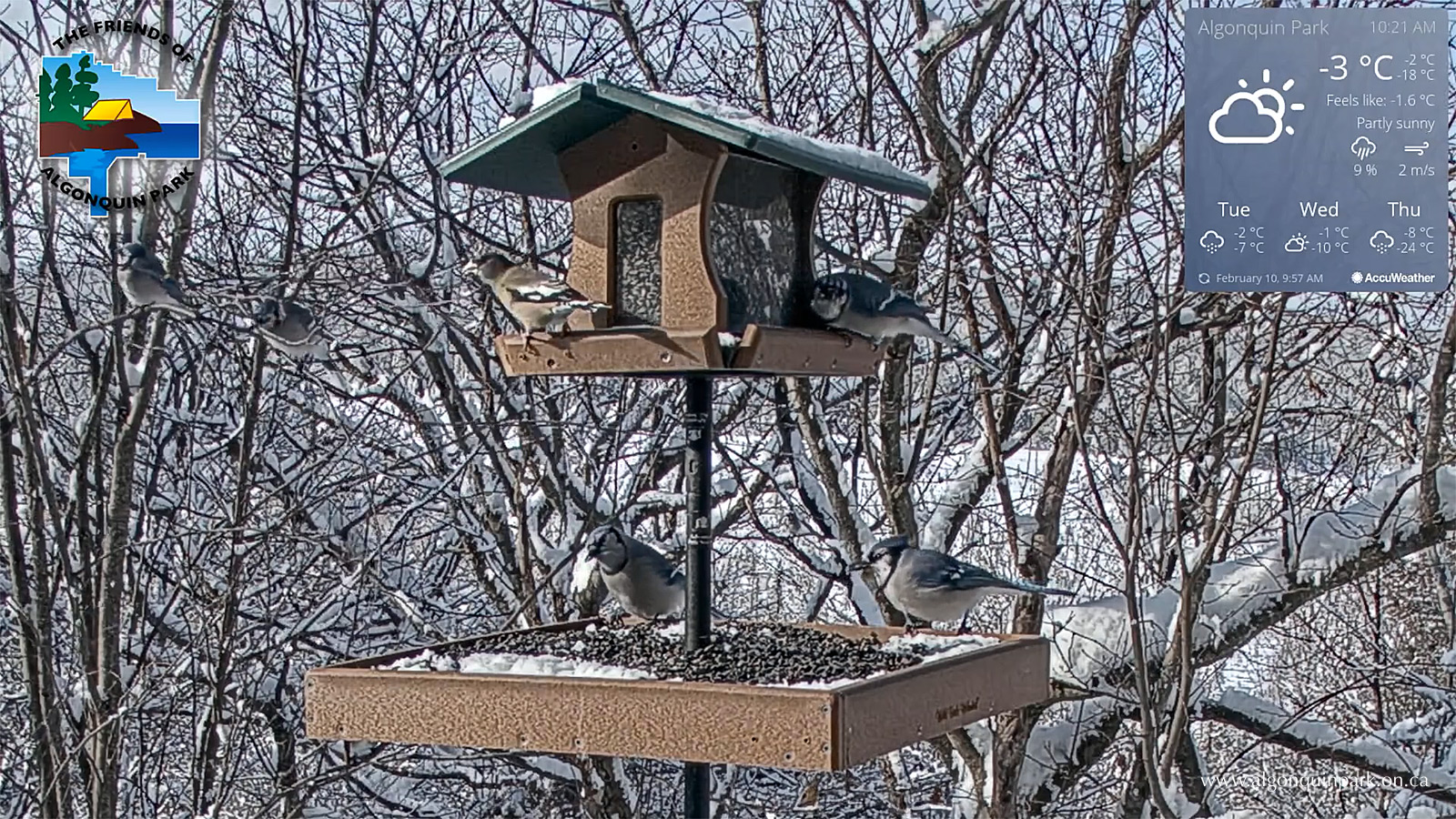Events Calendar
Current Weather
Algonquin Park Wild Bird Cam - Live Stream!
Algonquin Park is home to excellent bird watching opportunities. During winter, many northern bird species migrate south offering a blend of northern and southern bird species that attract visitors from around the world. Viewing Algonquin Park's wild birds in person is always the best experience. But for those who can't visit today, The Friends of Algonquin Park is offers live streaming views of the feeders at the Algonquin Park Visitor Centre during the winter months.
Watch the Live Stream During the Winter
The Friends of Algonquin Park's Wild Bird Cam Live Stream is currently offline. Please check back in mid-December 2025 for our next broadcast.
Thanks to Wild Birds Unlimited Toronto
 Thanks to Wild Birds Unlimited Toronto for providing bird feeders and seed for the Algonquin Park Visitor Centre. See their selection of birding related equipment such as feeders, seed, binoculars and more.
Thanks to Wild Birds Unlimited Toronto for providing bird feeders and seed for the Algonquin Park Visitor Centre. See their selection of birding related equipment such as feeders, seed, binoculars and more.
Related Information
- Live Views of Algonquin Park - Algonquin Park Webcam
- Winter in Algonquin Park
- Operating Hours and Dates
- Visit Algonquin Park
- Algonquin Park Visitor Centre
- Camping in Algonquin Park
- Weather
- Directions
- Special Events
Reserve your developed or backcountry campsite for your next visit.
Share your passion for Algonquin Park by becoming a member or donor.
Special regulations for Algonquin's special fishery.










